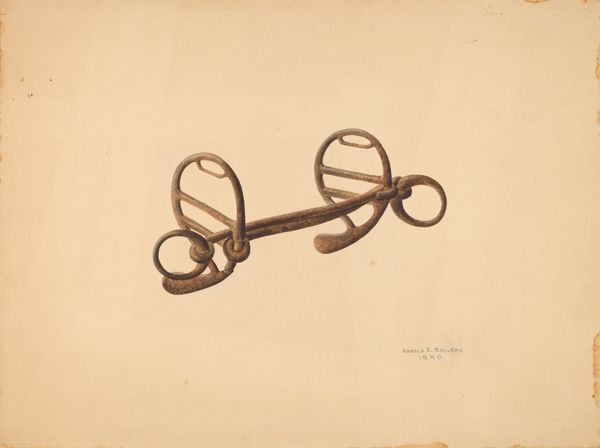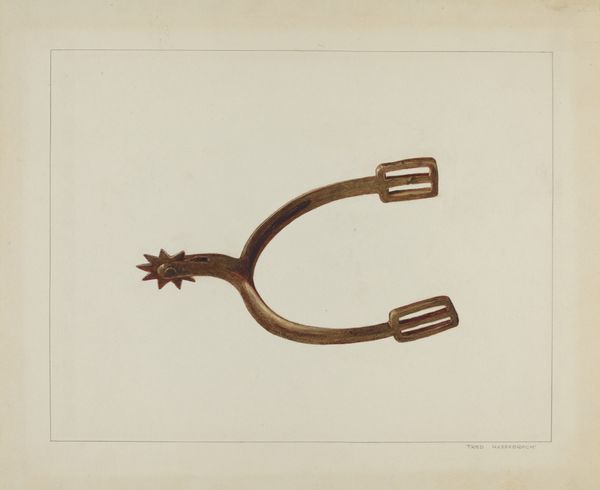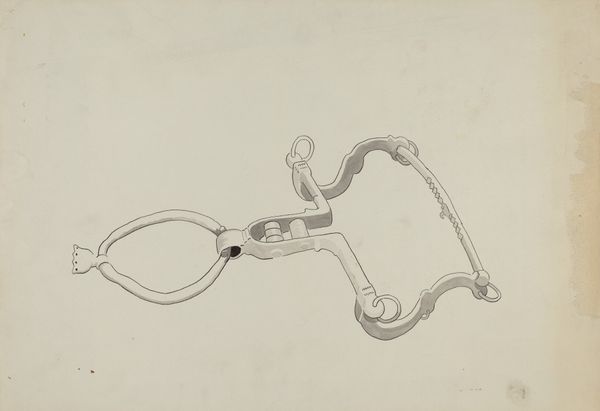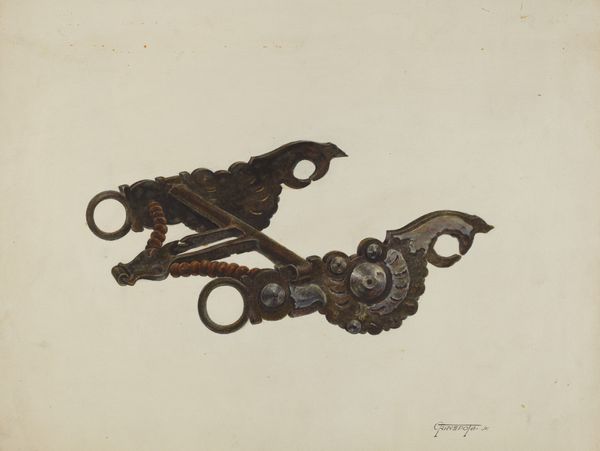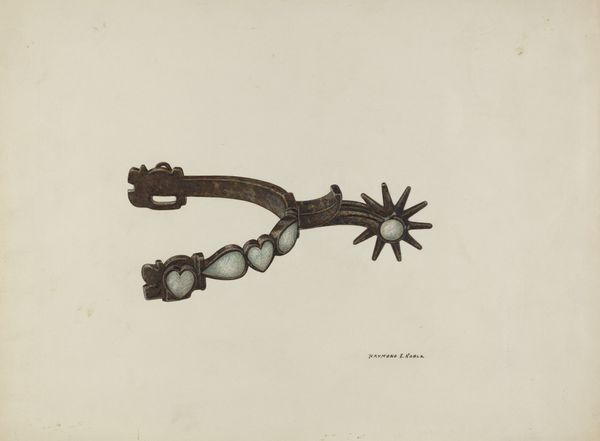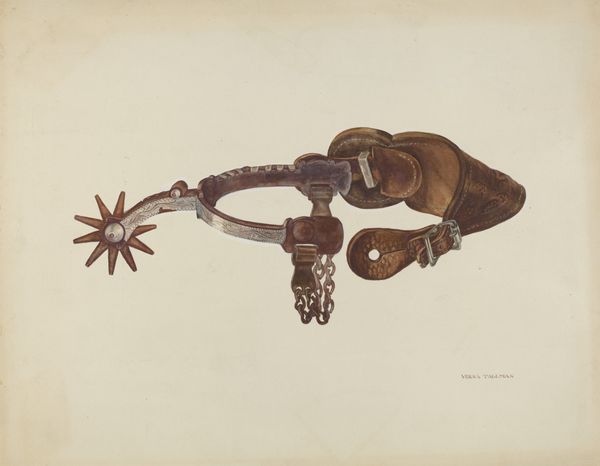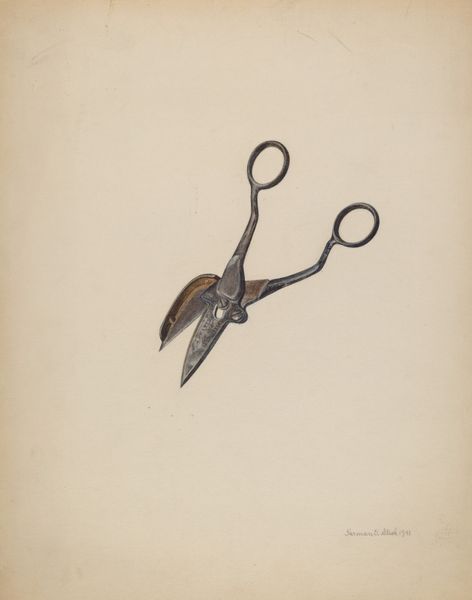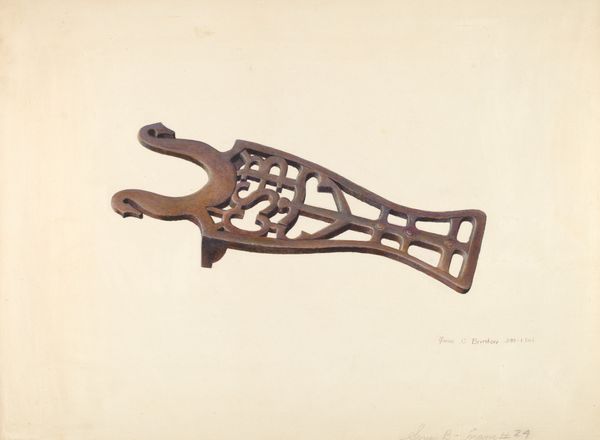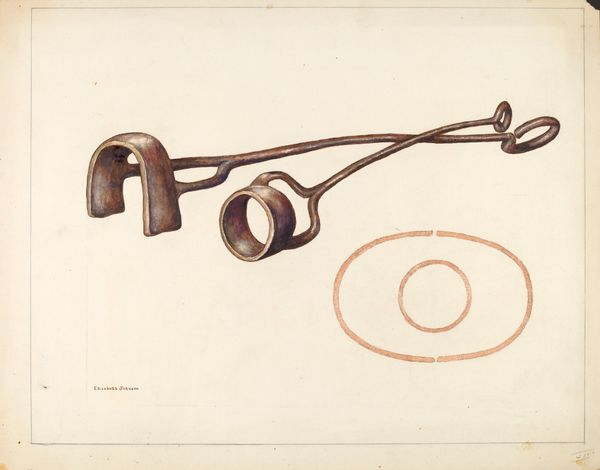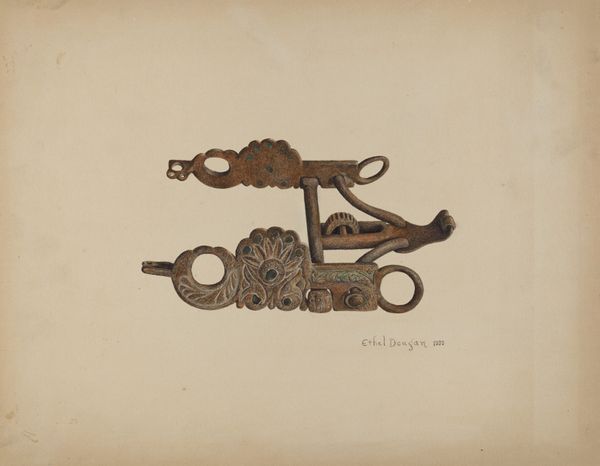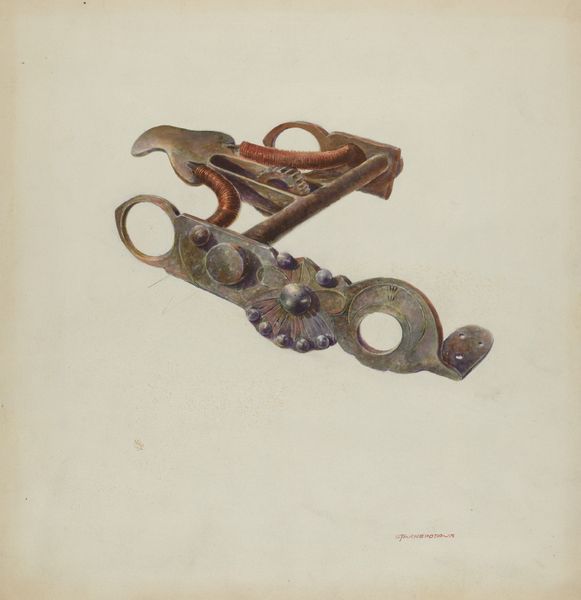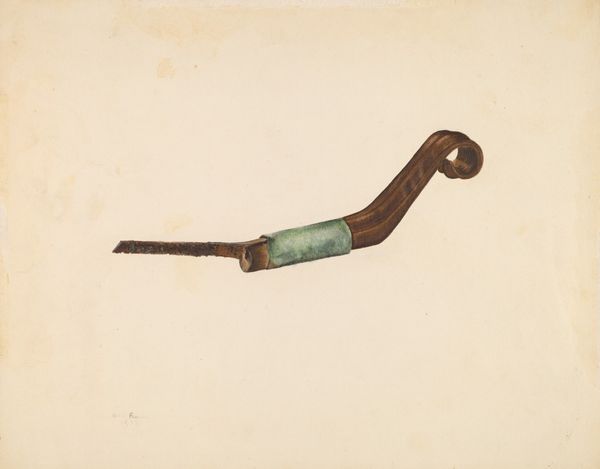
drawing, watercolor
#
drawing
#
watercolor
#
pencil drawing
#
realism
Dimensions: overall: 23.3 x 28 cm (9 3/16 x 11 in.) Original IAD Object: 5 1/4" long; 4 1/2" wide
Copyright: National Gallery of Art: CC0 1.0
Editor: We’re looking at Leslie Macklem’s "Wick Trimmer," circa 1939, a drawing rendered with pencil and watercolor. It's so detailed; it almost feels like I could reach out and use it. I'm struck by how such a utilitarian object is given such attention. What does this artwork suggest to you? Curator: This intimate portrayal elevates a common household item, but it also says much about artistic practices during the 1930s. Realist depictions of everyday objects gained prominence during the period of social realism, where art became more concerned with reflecting ordinary people and their lives. What message might this artistic decision about subject matter be making? Editor: I suppose it speaks to the value of labor and the objects that support daily life? Perhaps as a response to the economic hardships many faced during the Depression? Curator: Precisely. Consider the role of museums and galleries during this period as well. Did they provide a platform for art reflecting these social realities, shaping public perceptions of value and significance? Or was it a deliberate commentary or counter-narrative? Editor: That’s fascinating. I hadn’t considered how institutional frameworks play such a vital role in determining what art gets seen, and the statement that the selection makes. Curator: And don't overlook the material conditions. The use of drawing and watercolor, mediums accessible even during difficult times, might suggest an intention to create art accessible to all. Editor: It's like the materials themselves tell a story! Thanks, this has really changed how I see art, not just as isolated objects, but as parts of larger social and historical dialogues. Curator: And that's where the true value lies - recognizing the intricate connections that weave art into the fabric of history.
Comments
No comments
Be the first to comment and join the conversation on the ultimate creative platform.
